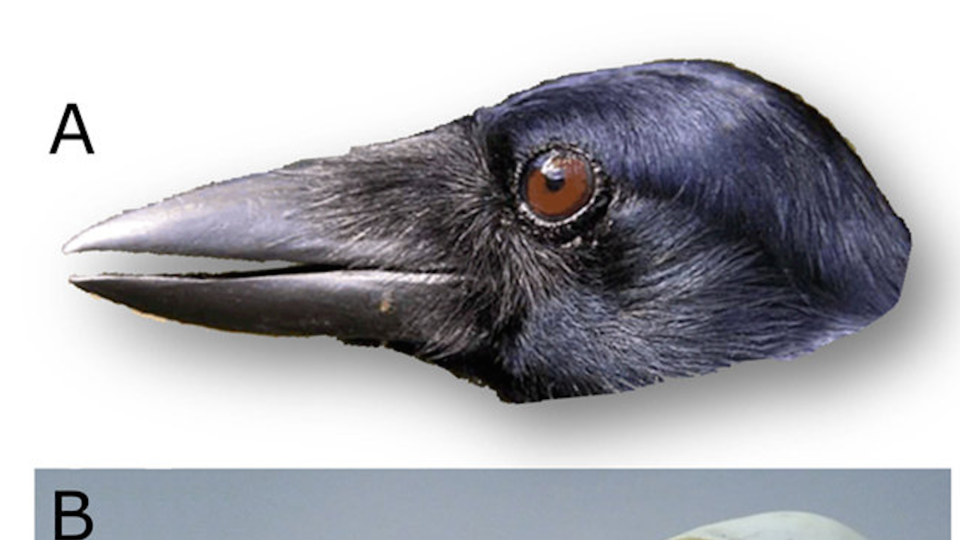Science News
Beak or Tool

The first time Kevin McGowan of the Cornell Lab of Ornithology saw stuffed specimens of New Caledonian crows he was very surprised. “I remember saying to a student, ‘I don't know what this bird does, but it does something different from any other corvid on Earth because its bill is so weird.’”
So he did a little research into the birds and discovered the corvids do a few things very differently—namely make their own tools for digging food out of hard to reach places. In fact, this tool-making skill sets the crows apart from all other birds and most other non-primates, so McGowan wasn’t too far off. And like any good scientist, he followed this hunch to explore whether tools shaped the beak, as is thought with the evolution of human morphology and tool-use.
McGowan and his colleagues used CT scans and shape analysis to compare the New Caledonian crow to other crows and woodpeckers. “Their bill is shorter than a regular crow’s,” McGowan says. “It’s blunter, and it doesn't curve down like nearly all bird bills do. The lower mandible actually curves slightly up, which likely gives it the strength it needs to hold the tool. And because the bill doesn't curve downward it brings the tool into the narrow range of the bird's binocular vision so it can better see what it is doing.
“We argue that the beak became specialized for tool manipulation once the birds began using tools, and that this enhanced tool manipulation ability may have allowed the crows to make more complex tools,” he continues. Birds with blunter, straighter bills were probably more adept at handling tools for foraging and over time those features evolved, McGowan said. In the case of the New Caledonian crow’s beak, McGowan says, you might say it’s not so much “you are what you eat,” but “you are how you eat.”
And there’s even more to it. “They hold the stick tool so that it goes up along the side of their head along the length of the bill,” McGowan explains. “Apparently there are birds that favor one side of the head over the other—left-sticked or right-sticked, you could call it—it’s really cool.”
The study was published earlier this month in Scientific Reports.
Image: Scientific Reports, doi:10.1038/srep22776